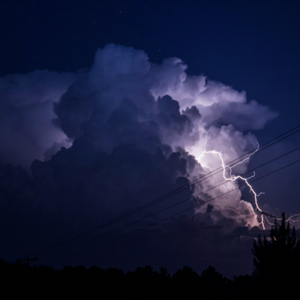

In a remarkable display of nature’s power, a single lightning flash stretched 515 miles across the Great Plains, from eastern Texas nearly to Kansas City, setting a new world record for the longest horizontal lightning bolt ever observed. This "megaflash" occurred in October 2017 during a sprawling thunderstorm but was only recently identified through a reanalysis of satellite data. The previous record, from 2020, measured 477 miles.
Thanks to satellite-based instruments like those aboard NOAA’s GOES-16, scientists can now monitor lightning with millisecond precision across vast distances. Before 2017, lightning detection relied on ground-based radio antennas. But with the advent of geostationary lightning mappers, scientists can continuously track lightning activity worldwide. These tools now detect roughly one million lightning flashes each day.
Megaflashes are exceptionally rare—fewer than 1% of storms produce them. They stem from massive, long-lasting systems, some spanning an area the size of New Jersey. While most lightning travels under 10 miles, megaflashes can exceed 100 kilometers (62 miles) and sometimes branch toward the ground in multiple places.
Researchers believe even longer flashes may exist and could be documented as technology and analysis continue to improve. The new record, published in the Bulletin of the American Meteorological Society, adds to our evolving understanding of atmospheric extremes.
Experts caution that lightning can strike well beyond a storm’s visible edge, sometimes up to 15 miles away. Most lightning injuries happen just before or after a storm’s peak, underscoring the importance of waiting at least 30 minutes after thunder ends before venturing outside again.

